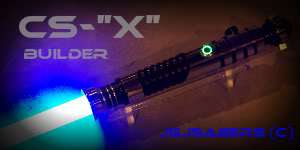This all sounds good to me. So the initial aim is to make a simple sound board, comparable to the MR? some people have said Hasbro, what are peoples opinions on this? Do we want it to drive a lux? or is this on the "wishful thinking" list? (I must admit I did get a bit carried away earlier, thanks for keeping me grounded guys)
Since my last post I have been thinking about the soldering issue a lot and I must concur I did brush the issue aside to quickly. Looking at an MR board, I think that would be obtainable by somebody with average skills to solder (making sure they use IC sockets) a similar board and have it not much bigger. I also agree that printed boards would be easier for people to solder. My concern with pre-printed boards is that it would turn it into an business. Even if no profit is made, somebody is going to be responsible for ordering them and shipping them etc. I don't have a problem with it becoming a business, It just seemed to me to add a level of social complexity that could be avoided. This being said, I do see the merit in them, and don't see a problem if there is demand for it. If we did sell boards, perhaps it would be smartest to sell it as a complete kit that could be assembled. That might also solve the development board problem with the microcontroller, as a preprogrammed microcontroller would be packaged with it. Everything would still be available for those who didn't want to buy the kit. But if people wanted a board that all they needed to do was assemble it, this would also be available. I suppose these issues are best kept in mind, but only really become relevant when we have a working prototype.
**edit** I thought I would clarify on the soldering an MR type board statement. I think people would be able to do this because it uses no SM parts (at least from what I can see in the pictures, I haven't taken my MR apart yet). I agree newbie's should not be expected to solder SM parts. If people have difficultly soldering their Corbin Drivers, SM parts would be suicide.





 Reply With Quote
Reply With Quote










Bookmarks